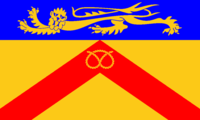Please tell us which country and city you'd like to see the weather in.

Silverdale, Staffordshire
Coordinates: 53°00′57″N 2°16′03″W / 53.0159°N 2.2675°W
Silverdale is a suburban town and civil parish in Staffordshire, west of Newcastle-under-Lyme. In 1932 it became part of the Borough of Newcastle-under-Lyme and is now, with the exception of the north-eastern end, part of the Silverdale and Parksite ward.
Historically the village has been dominated by the coal industry and records indicate coal was mined in the area as long ago as the 13th century. The last colliery, Silverdale, closed in 1998.
Silverdale Colliery
The main employer in Silverdale for well over 100 years was Silverdale Colliery, also known locally as Kent's Lane. The first shafts were sunk in the 1830s and the colliery initially mined ironstone as well as coal. The main user of both the minerals was the nearby Silverdale Forge.
The colliery was completely rebuilt during the 1970s when three new drifts were sunk to exploit new reserves in the Keele area. Production increased and the pit mined over one million tonnes annually but was closed in 1998, the last deep mine in North Staffordshire to close.

Staffordshire
Staffordshire (/ˈstæfədʃɪər/ or /ˈstæfədʃə/; abbreviated Staffs) is a landlocked county in the West Midlands of England. The Cannock Chase AONB is situated within the county and also parts of the National Forest, as well as areas of the Peak District national park. It adjoins Cheshire to the north west, Derbyshire and Leicestershire to the east, Warwickshire to the south east, West Midlands and Worcestershire to the south and Shropshire to the west.
The largest city in Staffordshire is Stoke-on-Trent, which is administered separately from the rest of the county as an independent unitary authority. Lichfield also has city status, although this is a considerably smaller cathedral city. Major towns include Stafford (the county town), Burton upon Trent, Cannock, Newcastle-under-Lyme, Leek and Tamworth.
Wolverhampton, Walsall, West Bromwich and Smethwick were historic Staffordshire towns until local government reorganisation created the West Midlands county in 1974.
Apart from Stoke-on-Trent, Staffordshire is divided into the districts of Cannock Chase, East Staffordshire, Lichfield, Newcastle-under-Lyme, South Staffordshire, Stafford, Staffordshire Moorlands, and Tamworth.
Staffordshire (UK Parliament constituency)
Staffordshire was a county constituency of the House of Commons of the Parliament of England then of the Parliament of Great Britain from 1707 to 1800 and of the Parliament of the United Kingdom from 1801 to 1832. It was represented by two Members of Parliament until 1832.
History
Boundaries and franchise
The constituency, which first returned members to Parliament in 1290, consisted of the historic county of Staffordshire, excluding the city of Lichfield which had the status of a county in itself after 1556. (Although Staffordshire also contained the boroughs of Stafford and Newcastle-under-Lyme, and part of the borough of Tamworth, each of which elected two MPs in its own right for part of the period when Staffordshire was a constituency, these were not excluded from the county constituency, and owning property within the borough could confer a vote at the county election. This was not the case, though, for Lichfield.)
As in other county constituencies the franchise between 1430 and 1832 was defined by the Forty Shilling Freeholder Act, which gave the right to vote to every man who possessed freehold property within the county valued at £2 or more per year for the purposes of land tax; it was not necessary for the freeholder to occupy his land, nor even in later years to be resident in the county at all.

